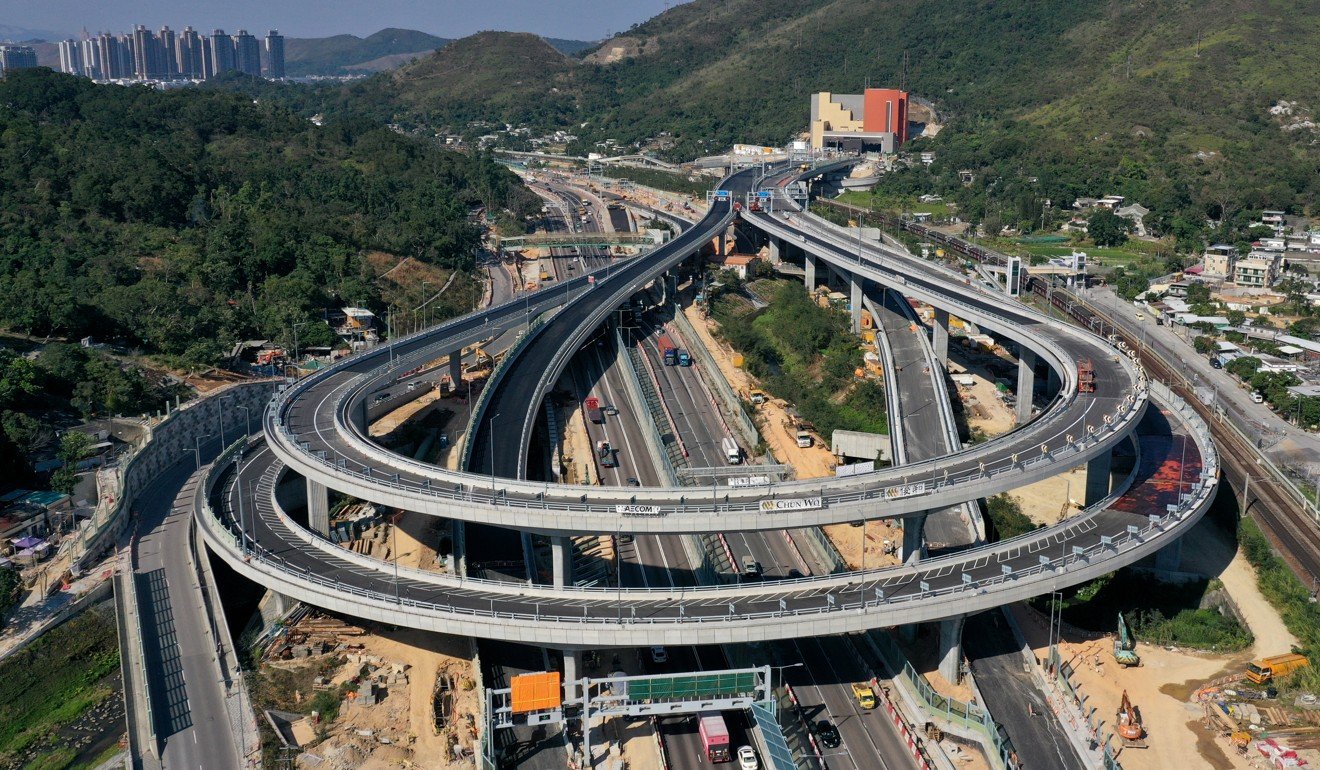
A major road linking Hong Kong’s new border crossing to Shenzhen will open to traffic this month, with the HK$33.7 billion Liantang-Heung Yuen Wai control point also expected to open by the end of the year.
The toll-free Heung Yuen Wai Highway, which connects the new border control point with the Fanling Highway, is expected to open from 8am on May 26, alleviating the busy traffic in the North District and reducing travelling time from Sha Tau Kok and Ta Kwu Ling to Sheung Shui, Tai Po and Kowloon.
Travel times from Loi Tung, Sha Tau Kok to Fanling Highway near Kau Lung Hang are expected to be cut from 15 minutes to just four minutes. It will take only eight minutes from Heung Yuen Wai, Ta Kwu Ling to the same spot, instead of the 24 minutes it presently takes.

At a press conference on Friday, the Transport Department’s chief traffic engineer, Chow Bing-kay, said he believed the road would reduce congestion on Sha Tau Kok Road, the only way for residents in the Sha Tau Kok and Ta Kwu Ling areas to travel to and from other parts of Hong Kong at the moment.
At about 11km long the road also has two tunnels, including the 4.8km Lung Shan Tunnel, which is the longest road tunnel on land in Hong Kong.
The road is one of the core works of the Liantang-Heung Yuen Wai control point project, a key infrastructure project included in the Hong Kong and Macau chapter of China’s 12th five-year plan.
The border crossing aims to strengthen Hong Kong’s connectivity within the Greater Bay Area, a development blueprint aimed to link Hong Kong, Macau, and nine mainland cities in Guangdong province to form a innovation and technology hub.
Officials said work on the control point is in the final stages and it is expected to open by the end of this year, about a year later than its original date.
Lai Cheuk-ho, project manager (north) at the Civil Engineering and Development Department, said most of the main construction had been finished by late 2018, but admitted it had taken longer than expected.
That time had not been wasted, and Lai said that stringent attitude had been taken when it came to checking the tunnel, and getting the fire services department’s approval.
“So, for that part, we had used a bit more time on that,” he said.
His colleague Joe Yip Hung-ping, the chief engineer, said the prolonged period for quality checks was simply for safety reasons.
Lai did not expect the road to exceed its roughly HK$25 billion budget, as the project had already reached the final stages.
“For the port, it is still under construction and it’s under the Architectural Services Department,” he said. “But according to our understanding, the cost can be managed within the approved fee.”

Ta Kwu Ling rural committee chairwoman Chan Yuet-ming hailed the opening of the highway and the new control point.
“With the opening of the new highway, villagers in the northern New Territories can reach Sheung Shui or Fanling in as short as four minutes, instead of the present 15 to 20 minutes,” she said.
“The new control point can also cut travelling time for those going to the east of Shenzhen and ease congestion at other land control points.”
The border crossing will also be the first land-based one in Hong Kong with direct access facilities for both passengers and vehicles, and is designed to handle 17,850 vehicle trips and 30,000 passenger trips a day.
At present, cross-border traffic going from the eastern New Territories to eastern Shenzhen has to use the Man Kam To and Sha Tau Kok control points, which on average handled about 4,569 and 2,312 vehicles a day respectively in 2018.







